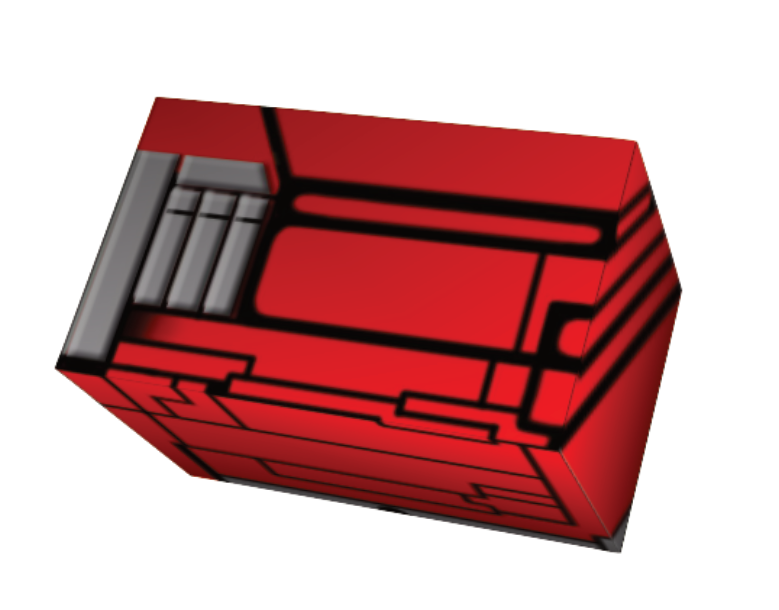I gave it a fair shot for about a year, using vanilla GNOME with no extensions. While I eventually became somewhat proficient, it’s just not good.
Switching between a few workspaces looks cool, but once you have 10+ programs open, it becomes an unmanageable hell that requires memorizing which workspace each application is in and which hotkey you have each application set to.
How is this better than simply having icons on the taskbar? By the way, the taskbar still exists in GNOME! It’s just empty and seems to take up space at the top for no apparent reason other than displaying the time.
Did I do something wrong? Is it meant for you to only ever have a couple applications open?
I’d love to hear from people that use it and thrive in it.
Every time I’ve tried using modern GNOME it’s like pulling teeth. I hate it. I think it has actual usability issues. Not disparaging anyone who likes it, it just really doesn’t suit me.
GNOME classic shell was ok, but when I installed KDE Plasma it was like coming home. Everything made sense and everything was where it needed to be. More or less.
In the end I’m just glad Linux has a variety of DEs to choose from. Even if you choose GNOME, you weirdo.
I think it’s some kind of modern UX design philosophy; Remove everything except the most basic features to make it less confusing for computer illiterate users. Then label the rest of the features as “advanced” and either hide them behind some menus or in a separate program. Obviously that doesn’t mean that everybody who likes Gnome and similarly designed software is computer illiterate, but it’s difficult to make one glove that fits all. Kind of like those failed experiments to make a unified OS for desktops, tablets and phones…
When Gnome 3 was announced I thought it was cool that they tried something new, and I really wanted to like it. I’ve given it a couple of more chances over the years, to see if it has changed more to my liking, but after a few weeks of use I always replace it with something else… The way the UX is designed just reminds me too much of what I dislike about Windows. Having to use dconf editor to change settings feels just like being forced to use regedit.
Firefox also tried to go down this road IMO, but have reverted some of the worst changes and can be made almost to my liking with the help of extensions. Personally I like Vivaldi better but I think it’s important to keep Firefox alive so that Chromium/Blink doesn’t get complete monopoly.
deleted by creator
Surely you dont have 10 workspace for 10 windows.
Am I not supposed to?
This is kind of the problem, if you add multiple apps in a random workspace, the only way I can think of to know which apps are in the background of that workspace is to memorize it. Which feels bad having to use my brain for that instead of focusing on whatever I’m doing.
If vanilla GNOME doesnt work for you, just install extension or move to another DE.
I’m trying dash to panel now, it seems to fix quite a few of my gripes.
deleted by creator
the only way I can think of to know which apps are in the background of that workspace is to memorize it
If you press Meta key and scroll, it shows all windows in each workspace. I think that’s also in vanilla, not one of my many extensions, haha.
Yes, I thrive in it.
I’ve always compared it to a window manager, but with a mouse focus instead of the keyboard. It feels very natural to me.
And with lots of polish and convenient features.
I think GNOME being minimalist with extensions is a good thing, but I disagree with what GNOME considers basic functionality or not. Two things that stick out:
- an app launcher. Literally every other desktop on the planet has one, how this isn’t considered basic functionality is beyond me. Give your grandparents a vanilla GNOME computer and tell them to get to Facebook and you will see how necessary this is in real time. Default should be dash-to-dock with intelligent autohide so you only see it when you need it. This would fulfill GNOME’s hangups about it while also improving usability, so I fail to see a downside.
- tray icons. GNOME treats background processes like bugs to be squashed. Let’s just get real here for a second: sometimes you want programs to run in the background and sometimes you want to be able to see what they are doing in real time. I want my email clients to tell me when I get emails, I wan’t my Nextcloud to tell me when there are sync issues, and I want Discord to tell me if I get DMs. This should be considered basic functionality.
an app launcher. Literally every other desktop on the planet has one, how this isn’t considered basic functionality is beyond me. Give your grandparents a vanilla GNOME computer and tell them to get to Facebook and you will see how necessary this is. Default should be dash-to-dock with intelligent autohide so you only see it when you need it. This would fulfill GNOME’s hangups about it while also improving usability, so I fail to see a downside.
GNOME does have a launcher, which works just like the launcher on Mac and Android. You can even select whether to see all your apps or only the most-used ones. I do agree that a taskbar/dock with intelligent auto-hide is a must, though (at least for my usability). That’s also not to say that some folks would rather have a Windows style launcher, and there are several DEs that provide that.
It’s not really the same design philosophy as iOS and Android since those actually have the equivalent of desktop icons, which function like a taskbar app launcher. So even they have a way of launching apps without a secondary menu.
an app launcher. Literally every other desktop on the planet has one, how this isn’t considered basic functionality is beyond me. Give your grandparents a vanilla GNOME computer and tell them to get to Facebook and you will see how necessary this is. Default should be dash-to-dock with intelligent autohide so you only see it when you need it. This would fulfill GNOME’s hangups about it while also improving usability, so I fail to see a downside.
Gnome has one. You tap the super key for the dock, then again for the full app list. I see thiscoomplaint all the time, and it confuses me every time.
“I don’t like the default app launcher” or “I’d prefer an always visible dock” fine, but Gnome doesn’t have one? What?
tray icons. GNOME treats background processes like bugs to be squashed. Let’s just get real here for a second: sometimes you want programs to run in the background and sometimes you want to be able to see what they are doing in real time. I want my email clients to tell me when I get emails, I wan’t my Nextcloud to tell me when there are sync issues, and I want Discord to tell me if I get DMs. This should be considered basic functionality.
I both agree and disagree with this. Gnome is trying to make a unified system for this sort of thing, and that’s admirable, but until it works, we kinda need a notification tray.
deleted by creator
@Nefyedardu@kbin.social @shapis@lemmy.ml
tray icons. GNOME treats background processes like bugs to be squashed. Let’s just get real here for a second: sometimes you want programs to run in the background and sometimes you want to be able to see what they are doing in real time. I want my email clients to tell me when I get emails, I wan’t my Nextcloud to tell me when there are sync issues, and I want Discord to tell me if I get DMs. This should be considered basic functionality.
Ideally the graphical app shouldn’t be running in the background UNLESS the user explicitly allows it. VLC is an example of an application that doesn’t run in the background unless the user allows it.
Yes, I prefer Gnome to KDE by a long way, it’s much nicer looking and easier to use, the trick is to use it the way it’s intended, instead of trying to control it to work how you think it should
You can just switch to kde or xfce if you dont like gnome, thats what linux is all about. For one I cant really use anything not-gnome anymore, its workflow feels just so efficient and is equally good with a touchpad, keyboard and mouse. I usually get distracted really easily on kde and the likes but gnome just gets out of the way and lets me focus more on my work.
The other options I tried were a bit too buggy for my tastes. I’ll stick with it a bit longer. Idk.
Fair lol.
I’d suggest trying to always use the apps in the same workspaces. I always open discord spotify steam in the leftmost workspace, firefox in the rightmost and the 3-4 ides i have open in the middle each on its own. Makes navigating through them a second nature in no time.
The problem is with GTK4, most software are moving, and it cause different UI and since GTK4, we as user can’t have option to enable noCSD anymore like GTk3 :')
I’m saying about XFCE, because I’m fond of XFCE workflow
Absolutely love it! I’ve donated hundreds of dollars to the Gnome foundation.
I like that practically all of the OS functionality is behind either super+seach or the quick settings menu. I love how powerful the overview is, and all hidden behind a single key press. I like that asking “Is X possible?” is immediately answerable, and 95% of the time it’s right in the first place I think to look. I like the trackpad gestures and workspaces on my laptop where I don’t have multiple large screens. I like that it has very little need for system tray icons which are clunky, inconsistent, and ugly. (Ex: Discord can only be quit from it’s tray icon… -_-)
I’m not a DE power user apparently, but I’m certainly not the mythical “lowest common denominator” that Gnome supposedly caters to either. I do a lot of programming in C/asm/, and write plenty of code involving lots of esoteric math. I don’t have much use for Python for instance, but I don’t think it’s “dumbed down” either. :p
KDE (and Windows to a similar extent) always has way too much “stuff” it wants to show you, 90% of it I’ll never use. Every window toolbar is chock full of icons, and so many actions trigger popups, notifications, or dialogs that have little purpose. It’s all terribly distracting and annoying. Still, I’ve donated hundreds of dollars to KDE foundation as well since it’s an important part of the Linux ecosystem. I don’t use it, but that doesn’t mean I hate it, and I see no reason why it shouldn’t flourish too. Open Source is not a competition.
Good on you for donating to kde and gnome! In case you don’t know, there is an option in discord settings to quit whenever the window is closed.
I did not know that… Thanks! I looked through all the settings at some point, but mussed have missed it.
What I don’t understand about Gnome is how are you supposed to handle some task. I’m thinking about moving stuff around between directories. I sometimes need to have 3 or more separate folders open at the same time and quarter tiling and split view in Dolphin is a godsend. Gnome has neither split view in Nautilus nor quarter tiling.
Yes, I know there are ways around that like Pop-shell and other extensions, but I am specifically curious about the default Gnome workflow. In my opinion Gnome tends to skew too much towards form over function.Its pretty simple you can open 3 different nautilus windows or open 3 tabs in nautilus. Not really very different then dolphin’s function but I found myself never using that function in dolphin anyway. I have a good example for a many window workflow that I do sometimes which is when I tag my music. Usually I have a web browser on one workspace or the music tagger split in half with the web browser and then I have separate work spaces with nautilus open in 2 windows with some tabs. I do all that alongside a game playing in the background casually and maybe a picture-in-picture window alongside that also open watching a video. I only have one monitor.
I do use snapping for some things like my IDE, and use the side by side once in a while, but generally don’t use snapping. I have used the Pop Shell on my work computer where I tend to have a lot of terminals and little windows open on my big 4k monitor, though 90% of the time I leave it off. Generally speaking I just use small free floating windows and use alt-tab or Gnome’s overview to find a hidden window. I dunno when snapping entered the scene, but the first time I used it was maybe a decade ago. It’s nice, but decades of computers before that have trained me to mostly not care I guess. You can do tabs in Nautilus and drag files to the destination tab. I do that a lot I guess.
Vanilla GNOME without extensions is very challenging to use IMHO. It lacks serious Quality of Life features (well, it doesn’t lack them, they’ve been purposefully removed).
It’s so frustratingly close to being excellent, clean desktop - but then it takes some really strange decisions with basic usability (like panel, taskbar, windows without controls etc).
Luckily those are easy to fix with couple of extensions.
Indeed, I’m trying dash to panel and it doesn’t feel like it fixes quite a few of the issues I was having. I’m just afraid this is going to break every GNOME update and it’s going to be annoying.
Updating is not too bad, as long as you don’t update as soon as new major Gnome version is available. I usually wait a few months, and by then all extensions are either updated, replaced by a fork, or obsolete.
I used Pop_OS for a while and I think they’ve added a lot of great UX improvements to GNOME. When I tried vanilla GNOME I was about to pull my hair out and didn’t really want to spend all the time downloading extensions/tweaks just to make it usable
I love Gnome. But I have a pretty simple workflow where I don’t use many applications. Generally I have a browser and terminal open and that’s it.
I do all my window management inside of Tmux, which is effectively my actual window manager.
I’ve tried KDE in the past but I’ve never liked how it feels like a stepping stone for the Windows interface – not a huge fan of pullout menus. I’ve been using Linux exclusively for almost twenty years so I don’t have any love for that UX.
I used to use a lot of simple/tiling window managers when I was younger and more patient, Gnome feels similar to those in how it has very few bells and whistles to get in your way.
If only maintaining extensions was easier, it feels like every major release breaks every extension for something stupid like renaming a constant. The Gnome team seems to put very little consideration into making the JS extension API stable.
I love GNOME more than any other DE. I like how it works very well with keyboard shortcuts. The only extensions I use are the weather and the tray icons.
I fell in love with Gnome 3 when it first came out and havent looked back. I dont miss a taskbar because I just use the keyboard shortcuts to move between workspaces and alt+tab to switch programs. Gnome seems to be more efficient the less you use the mouse which is my preferred M.O. anyways.
It feels great on my laptop with gestures. On desktop, not so much. Feels like it’s designed to have one full screen application up at a time. Removal of tray icons is just stupid, and they should just give up on their push against them. Which their quest against tray icons is actually worse then just unstandardized tray icons themselves. Still, it’s definitely the most polished DE out there, so that’s why I tend to stick with it and run dash-to-panel. The overview mode is actually better then I realize now that I got used to it. Even pressing the mouse against the top left corner starts to feel nice.
You are not alone. Many love its ‘restrained’ workflow, and DEs are subjective. It sounds like you are ready to move to KDE. KDE has a ‘Overview’ that mimics Gnome’s, so best of both worlds and the taskbar in KDE is actually functional. Don’t waste anymore time, make the switch to day. Operators are standing by. 🤣
I have ADD and GNOME is a life saver. I usually put one and only one window by workspace. It allows me to be focused to the max on the task I’m doing.
Also Libadwaita is so sexy.
I use GNOME (under Fedora) on a laptop that sits at my right hand side, so I use it with only one hand. Using three-finger swipe to change workspaces is awesome - I usually use a workspace for each app, or sometimes two apps share a workspace, but I don’t worry about which one they are on, it’s so easy I just swipe until I find the one I want.
I use an extension to auto-reveal the dock when I go to the bottom of the screen. The default behavior of going to the top left of the screen, only to traverse all the way down to the dock at the bottom (or the right for workspaces), just seems really inefficient, especially on a touchpad.
I had it all tricked out with other extensions but they keep breaking with new GNOME releases, so I’ve mostly given up on that.
I usually bring up the dock by tapping the super key or using a three finger swipe up. I barely use the hot corner at all since Ifigursed that trick out.












